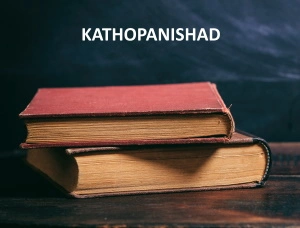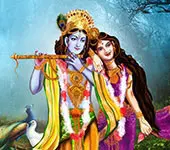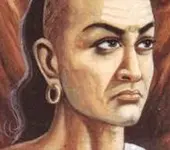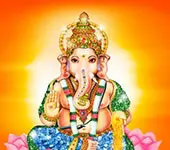How to attain absolute peace?
Transcript
(Click here to read more)
We are going to look at the meaning of the 17th mantra in the prathama valli of the 1st adhyaya of Kathopanishad. त्रिणाचिकेतस्त्रिभिरेत्य सन्धिं त्रिकर्मकृत्तरति जन्ममृत्यू । ब्रह्मजज्ञं देवमीड्यं विदित्वा निचाय्येमाँ शान्तिमत्यन्तमेति ॥ १७॥ Yamaraja has already taught Nachiketas the Agnividya, how the higher worlds can be attained through Ag....
Transcript
(Click here)
We are going to look at the meaning of the 17th mantra in the prathama valli of the 1st adhyaya of Kathopanishad.
त्रिणाचिकेतस्त्रिभिरेत्य सन्धिं त्रिकर्मकृत्तरति जन्ममृत्यू ।
ब्रह्मजज्ञं देवमीड्यं विदित्वा निचाय्येमाँ शान्तिमत्यन्तमेति ॥ १७॥
Yamaraja has already taught Nachiketas the Agnividya, how the higher worlds can be attained through Agnividya.
The principle behind Agnividya.
Particularly, through a type of yajna called the Chayana.
We have seen that the sphere of influence of Agni extends up to 33 levels from its center.
That means, suppose you are doing a yajna here on earth, it has a vast sphere of influence.
It is called Vashatkara-mandala.
This has 33 concentric levels.
Out of these three levels are important - 17th, 21st, and 25th.
These three levels are at the level of Swargaloka.
Swargaloka or Dyuloka is under the control of Surya.
We say that Indra is the ruler of Swarga.
Indra is just one aspect of Surya, the administrative aspect of Surya.
Just like how a person plays different roles in life - that of a father, that of a husband, that of a friend, that of a neighbor, Indra is the administrative aspect of Surya.
When a person does the first Chayana-yajna, he attains up to the 17th level.
That means he gets control up to the 17th level.
That means he is no longer an instrument in the hands of some external forces.
He has full control over his affairs up to the 17th level.
The second Chayana takes him to the 21st level.
He is much more powerful now.
The third Chayana takes him to the 25th level and beyond.
Beyond the 25th level is absolute freedom, absolute peace.
This absolute peace is what is meant by the last term of the mantra - शान्तिमत्यन्तमेति - he attains the highest peace, absolute peace.
That means there are different levels of peace.
Beyond the 25th level is absolute peace.
Now, what do you call someone who has crossed the threshold of the 25th level?
Trinachiketa.
As you would remember, Yamaraja named this entire process after Nachiketas.
Like how you name a road after a great person - M.G.Road, Ram Manohar Lohia Road..
The road is already there but then you are naming it after someone.
Agnividya is already there.
But impressed by the intelligence and enthusiasm of Nachiketas, Yamaraja named it after Nachiketas.
Originally called the Swargya-agni, it shall henceforth be known as Nachiketagni.
And someone who attains up to the 25th level by performing Chayana 3 times will become known as a Tri-Nachiketa.
This is what the first half of the mantra says.
त्रिणाचिकेतस्त्रिभिरेत्य सन्धिं त्रिकर्मकृत्तरति जन्ममृत्यू
He goes beyond the cycle of births and deaths.
If you go beyond the 25th level, you won't take birth again.
That means if you perform 3 Chayanas while you are on earth, you won't have to take birth again once you die - तरति जन्ममृत्यू
Keep in mind that the levels from 17 to 25 make the Swargaloka.
Swargaloka is attained through karma, action, good deeds.
So the mantra says त्रिभिरेत्य सन्धिं त्रिकर्मकृत्
The karma has three parts -
Performance of the prescribed yajnas.
Tapas - self-control, mind-control, body-control, sensory-control and practices for developing these
Dana - giving away, expanding yourself beyond your physical body and surroundings, taking care of the needs beyond yourself.
That is why it is said - त्रिभिरेत्य सन्धिं त्रिकर्मकृत्
Now, the number 3 here signifies much much more.
There are three Agnis in yajna: Garhaptya-agni, Ahavaniya-agni, and Dakshina-agni.
Not just doing the yajna any way you want.
You see, these Vedic yajnas are not like a one or two hour-long havan.
They are elaborate and take months or years to complete.
Every small step is important.
If there occurs a mistake, it should be identified and rectified immediately.
It is like coding.
One small typo, the program can end up crashing or giving you some other result.
So, doing the yajna with perfection, is that sufficient?
No.
ज्ञात्वा कर्माणि कुर्वीत नाज्ञात्वा कर्म आचरेत्
अज्ञानेन प्रवृत्तस्य स्खलनं स्यात् पदे पदे
The performer should have a complete understanding of what he is doing.
Not just the procedure, what is behind the procedure.
Not only HOW, the WHY also.
Physical karma is a tool to shatter your wrong understanding of the world and realize the truth.
Swarga and beyond are achieved when you shed your ignorance and gain knowledge.
What enables you to live in a new place?
Say, you want to go and settle down in Germany.
You should know German.
If you don't know German, you should learn.
That is acquiring knowledge.
Acquiring knowledge of German enables you to go and live in Germany.
If you want to live in Swargaloka, your knowledge should be equal to that of those who live there.
You should become as knowledgeable as the Devas.
Yajnas are your practicals.
Yajnas are your means to acquire that knowledge.
Devas know how the universe works.
You don't know that yet.
Yajnas are models of the various systems and activities in the universe.
Using these models, you acquire that knowledge yourself.
When your knowledge becomes equal to that of the Devas, you become eligible to enter their world.
This is the whole idea of performing yajnas.
But unless you understand what you are doing, you won't get the expected result.
The performer of the yajna is on earth.
He has to rise up to Antariksha, then to Swarga.
This progression in 3 levels is also indicated by त्रिभिः in the mantra.
He has to employ 3 kinds of mantras in the yajna: Rik, Yajus, and Sama.
A person acquires knowledge from 3 sources - mother, father, and teacher.
मातृमान्पितृमानाचार्यवान्ब्रूयात्
First, he learns life skills from the mother.
Then, as he grows up, he gets exposed to the world through his father and learns how to interact with it.
Then the formal learning from the teacher.
All these 3 kinds of knowledge are necessary.
त्रिभिः in the mantra also points towards this.
Now, the second part of the mantra -
ब्रह्मजज्ञं देवमीड्यं विदित्वा निचाय्येमाँ शान्तिमत्यन्तमेति
There is clear demarcation between the first half of the mantra and second half.
The first half is about what you can achieve through karma.
The second half is about what is to be known, realized, which is beyond the 25th level, which is beyond the Swargaloka.
What is beyond Swargaloka?
What is above Swargaloka?
What is between the 25th and 33rd levels of Agni's Vashatkara-mandala?
Parameshti and Swayambhu.
We will see the details of these two some other time.
Absolute peace is at the level of Swayambhu.
Even beyond this is the unmanifest Paramatma.
Compare this to a tree.
The ground where it stands is Paramatma.
The roots are Swayambhu and Parameshti.
Lower down Swayambhu and higher close to the surface, Parameshti.
The trunk of the tree, at the ground level is Swargaloka or Suryaloka.
Above that, Chandraloka.
At the top, the branches and the leaves, that is the Earth.
So, even if you are beyond the 25th level, you are still part of the created world, but liberated, beyond birth and death.
At Swayambhu level, there is absolute peace अत्यन्तशान्ति.
On earth, when you feel peaceful for a while, it is a vague glimpse of the absolute peace at Swayambhu that you are getting.
Even though the roots and the branches of the tree are far apart, they are still connected, you see.
There is material and energy flowing between them.
If you shake the tree from the bottom, even the branches will shake.
If you pull it from the top using a crain, even the roots will come off the ground.
That is the connection.
The second part of the mantra says that if you want to attain total peace, there is a Deva, a divinity that you should understand - ब्रह्मजज्ञं देवमीड्यं विदित्वा.
The manifested world has five parts - Swayambhu, Parameshti, Surya, Chandra, and Prithvi.
There are five kinds of yajnas or processes or actions associated with them - Brahmayajna, Vishnuyajna, Indrayajna, Somayajna, and Agniyajna.
There are five Atmas associated with them - Shantatma, Mahanatma, Vijnanatma, Prajnanatma, and Shariratma.
These are all derivatives of Paramatma and each one has its own distinct nature.
Now, there are two versions of the first term, it can be either ब्रह्मयज्ञं or ब्रह्मजज्ञं.
We saw that the yajna associated with Swayambhu is Brahmayjna.
ब्रह्मयज्ञेन ये नित्यं यजन्ते द्विजसत्तम
ते ब्रह्माणं प्रीणयन्ति वेदो ब्रह्मा प्रकीर्तितः - says Vayu Purana.
Brahma is Veda, that's why we call it Shabda-brahma.
Those who perform Brahmayajna every day, they propitiate Brahma.
Those who have learned the Vedas, they have to chant a portion of it every day, say a chapter every day.
That's how they stay in constant touch with Brahma, the Lord of the highest level, the Lord of Swayambhu.
They keep on learning, even at 70, 80, 100 they will be learning, they will be unraveling secrets of the universe to themselves every single day by doing Brahmayajna.
It is not just chanting, it is contemplative chanting.
Every time they revisit a mantra, it would give them a higher perspective.
This is the purpose of Brahmayajna.
It will connect them to Amritaloka, the world of the immortals which is beyond the Swargaloka.
This is Jnanayoga.
A single mantra of Kathopanishad is combining both Karmayoga and Jnanayoga, showing that they are inseparable.
You will not be able to do karma properly if you don't have jnana.
To reach Jnanaloka, the world of knowledge, you have to pass through the world of karma.
One can not exist without the other.
What is the way to attain this Brahma of Swayambhu?
निचाय्य - you have to realize that he is you yourself.
Through the acquired knowledge you have to realize that you are none other than that Brahma.
That will give you absolute peace.
Now the second version - ब्रह्मजज्ञं.
ब्रह्मजज्ञ means the knowledge acquired from the Vedas.
Because Brahma means Veda.
The knowledge acquired from the Vedas tells us that this Deva is none other than Surya.
If you take ब्रह्मजज्ञ instead of ब्रह्मयज्ञ, then you are talking about Surya instead of Brahma.
Surya only takes you to this own world and then sends you beyond.
That is why doing Sandhyavandanam and chanting Gayatri mantra are so important.
That's how you stay connected to Surya.
Even though the Amritaloka is beyond Suryaloka, even though absolute peace lies beyond Suryaloka, he is the one who is going to take you to its boundary.
Only he can do that, he is your only guide.
Surya is the God of intelligence.
He only stimulates and energizes your intelligence.
Overall, the mantra is also showing the importance of intelligence.
Do karma intelligently.
Mugged up knowledge is not of any use.
You should contemplate upon it using your intelligence.
So do karma, prescribed deeds, applying your mind and intelligence, understanding not just HOW, also WHY, to reach up to Swargaloka.
For this, connecting to Surya is important.
Keep on expanding your knowledge and connect to the Lord of the Swayambhu world, Brahma to attain absolute peace and immortality.
These are words of Yamaraja.
He is praising the Nachiketagni.

English Topics
Kathopanishad
Click on any topic to open
- 13 What to Ask for if You Meet God
- 12 Nachiketas Responds To The Offer Of Yamaraja
- 11 Yamaraja Tries To Dissuade Nachiketas
- 10 Third Boon Of Nachiketas
- 9 How to attain absolute peace?
- 8 Extra Boon From Yamaraja To Nachiketas
- 7 Yamaraja Teaches Nachiketas About Swargya Agni
- 6 The Second Boon Of Nachiketas
- 5 The First Boon Of Nachiketas
- 4 Which Comes First, Night Or Day?
Please wait while the audio list loads..
30
Ganapathy
Shiva
Hanuman
Devi
Vishnu Sahasranama
Mahabharatam
Practical Wisdom
Yoga Vasishta
Vedas
Rituals
Rare Topics
Devi Mahatmyam
Glory of Venkatesha
Shani Mahatmya
Story of Sri Yantra
Rudram Explained
Atharva Sheersha
Sri Suktam
Kathopanishad
Ramayana
Mystique
Mantra Shastra
Bharat Matha
Bhagavatam
Astrology
Temples
Spiritual books
Purana Stories
Festivals
Sages and Saints



